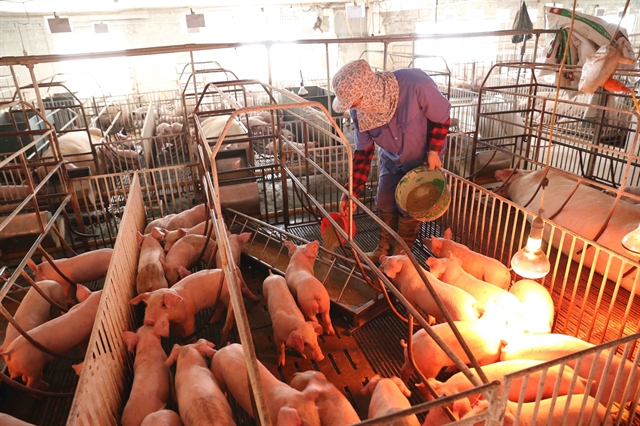With an estimated consumption of nearly 4 million tonnes in 2025, the country stands as the second-largest pork consumer globally, behind only China.

HÀ NỘI — Việt Nam’s appetite for pork continues to shape one of the most dynamic and high-stakes consumer markets in Southeast Asia.
With an estimated consumption of nearly 4 million tonnes in 2025, the country stands as the second-largest pork consumer globally, behind only China.
This sector is undergoing a profound structural shift - one that is rapidly redrawing the map of power and profitability in Việt Nam’s agribusiness landscape.
Historically driven by smallholder- and household-based production, the pork industry has reached a pivotal inflection point.
According to a 2025 report by TPBank Securities, the ongoing consolidation of supply, from small farms to industrial-scale operators, is set to intensify through 2026.
This evolution is not merely a response to market forces but a direct consequence of systemic vulnerabilities: disease outbreaks such as African Swine Fever, volatile input costs and inefficient supply chains.
The result is that about 90 per cent of small-scale pig farms have exited the market compared to five years ago, ceding ground to corporate giants with vertically integrated operations, according to Nguyễn Kim Đoán, vice chairman of the Đồng Nai Livestock Association.
Playground for giant processors
At the forefront of this transformation is C.P. Vietnam, the local subsidiary of Thailand’s Charoen Pokphand Foods.
The company operates on a comprehensive 'feed–farm–food' model, granting it unparalleled control over the pork value chain.
In the first quarter of 2025, the firm reported $812 million in revenue, contributing 19 per cent of the parent group’s global earnings.
Its 2024 results were even more impressive, with total revenues reaching VNĐ93 trillion, solidifying Việt Nam as its largest overseas market.
C.P. Vietnam is not only the leading pork producer in the country but also a dominant player in retail distribution through its Fresh Mart, Fresh Shop and Five Star franchises.
However, recently, the company was involved in a scandal of selling sick pigs. The Vietnamese Ministry of Public Security has initiated an investigation into allegations, while the Ministry of Agriculture and Environment has also requested a formal inquiry into these claims.
Local champions are also rising quickly.
BaF Vietnam Agriculture JSC, founded in 2017, has emerged as one of the fastest-growing domestic players.
In Q1 alone, BaF recorded net revenues of over VNĐ1.1 trillion and a profit after tax of VNĐ133.5 billion, driven by a 60 per cent year-on-year increase in pig output.
Pre-pandemic, BaF’s annual revenue stood at only VNĐ5–7 trillion, underscoring the pace of its expansion.
The company has set an ambitious target to produce over 830,000 pigs in 2025, and it aims to scale up to 10 million pigs annually by 2030, supported by a network of 100 farms and 13 processing plants.
Masan MEATLife, another major domestic contender and part of Masan Group, is capitalising on the growing demand for premium, traceable meat products.
With a strategic focus on branded chilled meat, the company reported VNĐ2.07 trillion in Q1 revenue, a 20 per cent increase year-on-year. Its net profit was over VNĐ116 billion.
Its projected full-year earnings range between VNĐ8.2 - 8.7 trillion, with a significant portion of growth expected from processed and value-added pork products.
Dabaco Group and GreenFeed Vietnam further illustrate the financial muscle driving the new phase of the pork industry.
Dabaco, with net revenues exceeding VNĐ3.7 trillion and net profits of VNĐ508 billion in Q1 alone, is building on its legacy as a feed-to-food conglomerate.
GreenFeed, founded in 2003, posted profits after tax surpassing VNĐ2.1 trillion in 2024, underscoring its successful strategy of full-chain integration. — BIZHUB/VNS





